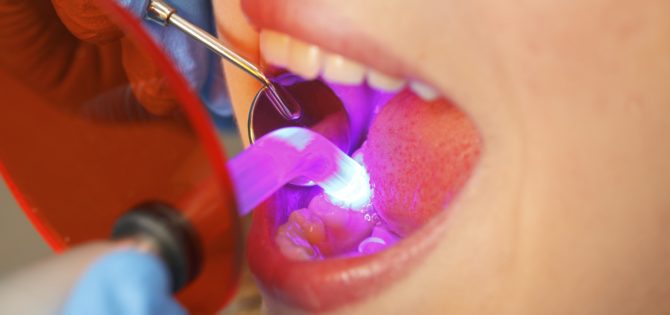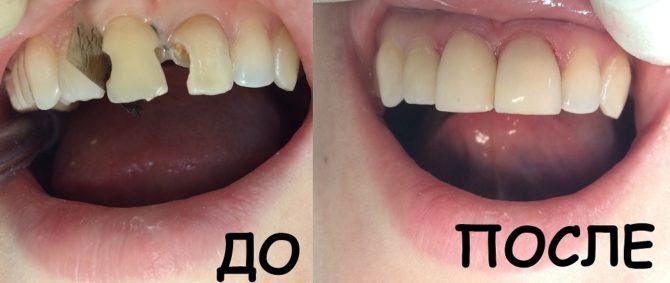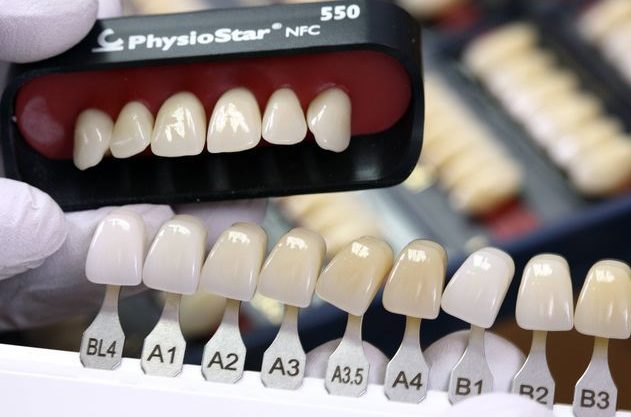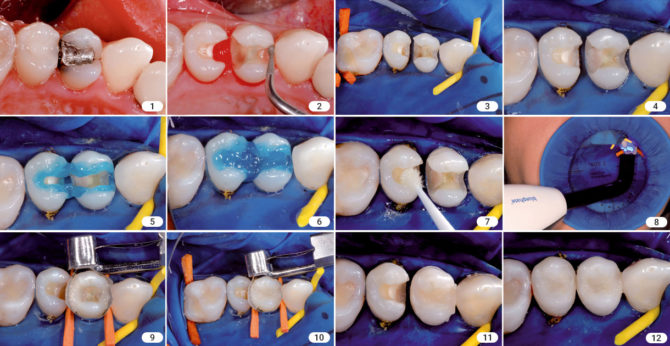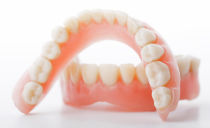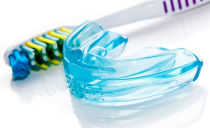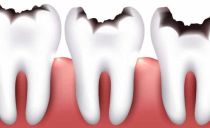Light fillings for teeth: what is it, the pros and cons, installation steps, service life
Filling is one of the most popular procedures in dental practice. The essence of the manipulation is to fill in the damaged tooth cavities with a special composition. The esthetic appearance, durability and strength of the healed crown depend on its properties.
Optimal fillings are dental fillings. Unlike other fillings, light is invisible, non-toxic, easy to install, worn for a long time and ideal for restoration of front teeth thanks to the wide palette of available shades.
Content
Light polymerization seal - what is it
A seal made of light-cured material can be found under the names photopolymer, reflective, polymer, light-curing. All these terms mean that a heliocomposite is used as a filling material, which, under the influence of ultraviolet light, breaks up into radicals and polymerizes.
The main component of a light seal is a heliocomposite. In addition to it, special fillers are included in the polymerization light-curing composition, on which the appearance, properties and service life of the structure depend. It can be:
- Macrophiles. Inorganic particles of large and medium size. The main advantages of fillings with their inclusion are high strength and X-ray contrast, which gives the doctor the opportunity to control the carious process. The disadvantages of such fillings are unstable color and roughness. They are placed on chewing teeth, in the treatment of which the main requirements for filling composite light-curing compositions are strength and safety.
- Microphiles. Small inorganic elements. Seals with the addition of microfiles are easily polished, stable in color and have a glossy gloss characteristic of natural enamel. The disadvantage is the low resistance to mechanical stress. Typically, microfila fillings are used for installation on the front teeth, where the ideal issue is the most important issue.
- Mini fillers. Compositions with mini-fillers do not have high resistance to mechanical damage, but are not brittle material. They are poorly polished and much less plastic than microfiles. Dentists place them solely for the purpose of repairing minor tooth defects. Their only advantage over other light curing materials is their lower price.
- Nano Hybrid Composites. Ultrafine particles that combine the best properties of macrophiles and microfiles. Seals made of a nanohybrid light-cured composite are durable, well sanded, and their color is stable. With their help, you can restore the frontal and chewing teeth of varying degrees of damage. The sealed area is completely indistinguishable from a natural tooth.
Advantages of light fillings for teeth
A seal from light-cured material belongs to the latest generation of dental technologies and combines the advantages of all other filling materials in the absence of their disadvantages. Light hardening seals:
- It is stronger than cement and plastic, but non-toxic, due to which they do not harm the dental tissue and do not change its color.
- Like ceramic fillings, they provide a uniform load on the teeth and serve for a long time, but can be installed after removing the pulp.
- They are easy to install and durable, as well as chemical compounds, but do not dry out over time and have a greater number of shades, making them optimal for filling frontal teeth.
There are only two drawbacks to filling with a light-curing composition. The first disadvantage is the inability to use this method of filling in hard to reach places due to the potentially insufficient light cure of the material. The second disadvantage of the reflective composition is the high price, so it is used only for the installation of permanent seals.
In private clinics in Moscow, the cost of installing a light-cured filling can exceed 5 thousand rubles; in regional dentists, the price ranges from three thousand rubles.
Indications for installation
Permanent fillings put, if necessary, to eliminate defects of carious or non-carious nature. Due to the variety of fillers that can be part of seals made from a light-cured composite, they can be placed in the presence of any indications for the installation of permanent seals.
Specific indications in which light-curing material for a seal is not just desirable, but necessary, are:
- pathological change in crown size;
- injuries, fractures and chipped teeth requiring restoration;
- pathological mobility of 1-3 degrees;
- the presence of scattered carious cavities on the entire surface of the tooth;
- elimination of defects on the anterior teeth;
- defects of the root or tooth neck;
- the presence of pigmentation, which is not eliminated by other methods;
- defects on a small area of enamel, where other filling compositions will not hold.
How to put a light seal
The procedure for installing a light seal is similar to other types of filling, it lasts from 30 minutes to an hour. Pre-selection of the shade of the material using a special scale.
Filling a tooth with light polymerization is carried out in stages:
- The doctor examines the oral cavity and performs local anesthesia.
- After the anesthesia has worked, the dentist removes the tissues affected by caries.
- Then the tooth is isolated from neighboring units with cotton swabs. To prevent saliva from entering the work surface, a saliva ejector is installed.
- The treated surface is thoroughly dried and coated with a special preparation for loosening dentin for 40 seconds. After time, the product is washed off, and the surface is dried again. The procedure is performed so that the light-curing composition adheres more firmly to the dental tissue.
- After completing the preparatory work, the doctor proceeds directly to the formation of light-cured fillings. The material is applied in layers. For curing, each layer is dried with an ultraviolet lamp for 1-2 minutes.
- After applying and curing all layers, the dentist proceeds to grinding to create an anatomically correct and patient-friendly crown shape.
- After giving the tooth an optimal shape, its surface is covered with a fluorine-containing protective varnish, which strengthens the enamel and helps the reflective seal to fix in the tooth crown.
After filling, slight discomfort is possible, but the patient should not experience pain. In the event that the pain did not go away during the day, it is necessary to contact dentistry so that the doctor finds out its cause and eliminates errors in their work.
Precautions after filling
After installing a light-cured filling, it is extremely important to follow the dentist's recommendations for oral care and nutrition for the first time after the procedure. You can eat no earlier than an hour after fillingFood should be neutral in temperature and hardness.
The final polymerization process continues for several days, so in the next 3-5 days you should refrain from foods and drinks with active pigments: cherries, beets, coffee, pomegranate juice, tomato soups. Such precautions are necessary in order to maintain the shade of the installed composite.
Light fill life
Subject to medical advice, the service life of a light seal installed on a tooth will be 5-6 years. The patient must comply with the rules of oral hygiene, undergo preventive examinations every six months and adhere to proper nutrition, especially in the first week after he was given a seal.
A balanced amount of hard and soft food, a sufficient amount of fruits and dairy products should be present in the diet. Most dentists insist on the need to stop smoking at least in the first two weeks after filling, otherwise preserving the shade of the composite is not guaranteed. Natural dental tissue and photopolymer are colored differently, so artificial material will noticeably stand out against the background of the dentition.

